I'm vacillating a little between KOAS (Kite on a stick) and simply using a fixed mast. Both have advantages. Simplicity has me leaning towards a fixed mast, at least for the short term.
Bearing that in mind, an experiment yesterday was quite encouraging. I'm annoyed with video editors so for now just a few stills extracted from the video - which will no doubt save readers some time in any case.
The mast is taller than the longest bridle - this is essential to ensure that the kite does not overfly the mast. It's fine for the kite (LE) to fly into the mast...but bridles wrapped around it would be (and has been...) bad. Two halyards are connected to the kite. One, the raising halyard, is connected to one wing tip (in this case left). The second, the reefing halyard, runs through a block at the point where the raising halyard is connected, then runs across the span of the kite through a small hole in each rib to the other wing tip where it is fixed. The kite is raised on the reefing halyard. At this point, some bridle lines are tight. The main load carrying lines are attached to the main tow point near the mast base. In the second picture the raising halyard, still loose, is seen (if you look carefully) flying behind the kite. That is brought up to enable unreefing.
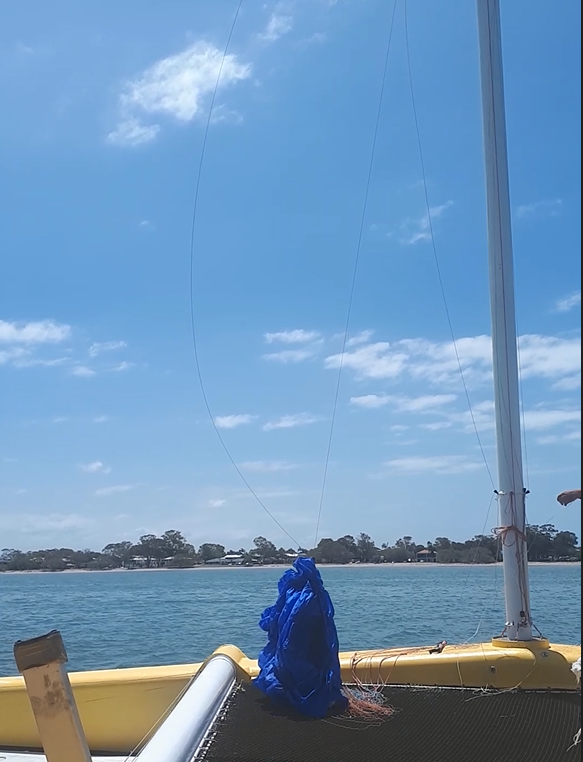
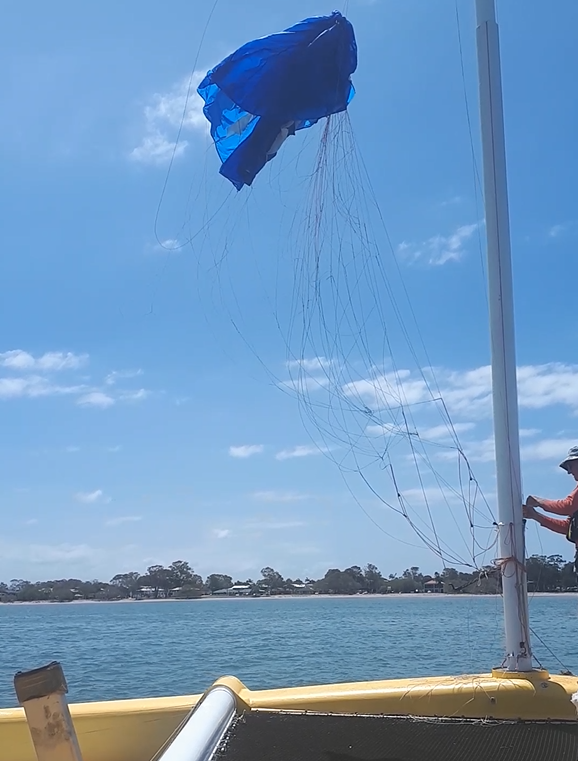
Unreefing was not as smooth as planned - but only because the very tiny halyard cleats didn't hold. In principle it worked quite well. The reefing line goes through each rib near the 2nd line of bridle attachments - perhaps 30% chord. It may be better closer to the LE as that should reduce the tangle/wrapping possibility - which was not a problem in this test.
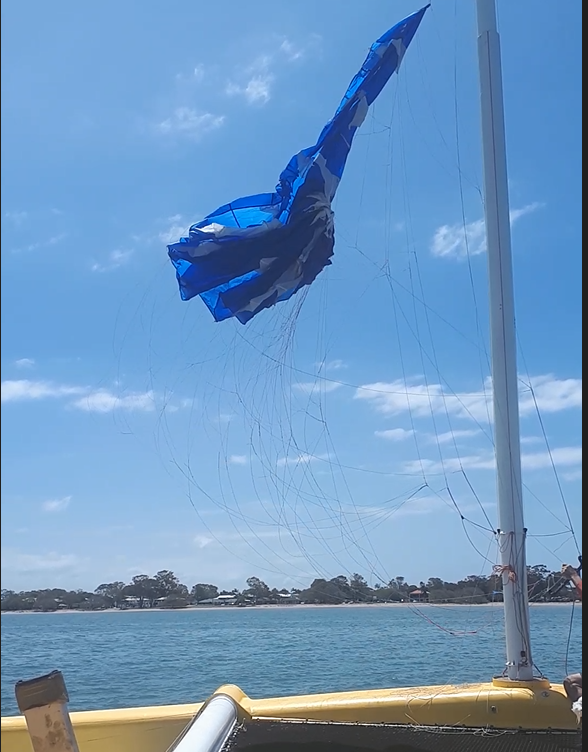
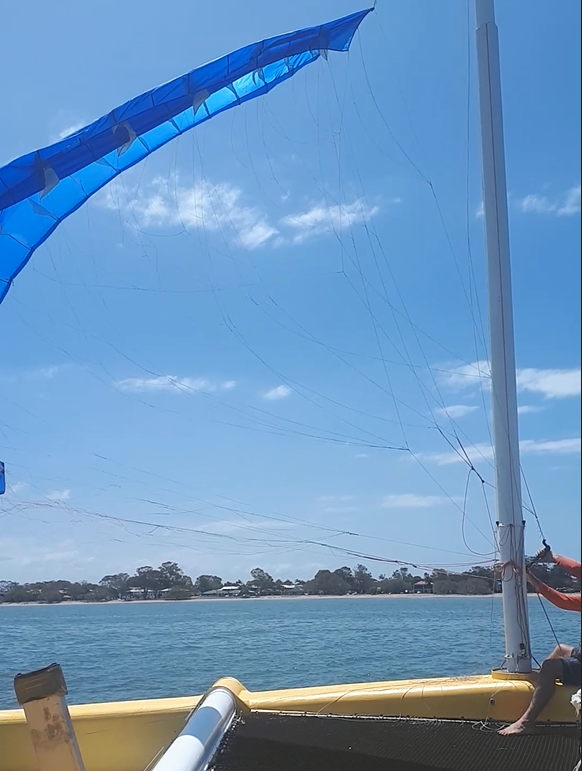
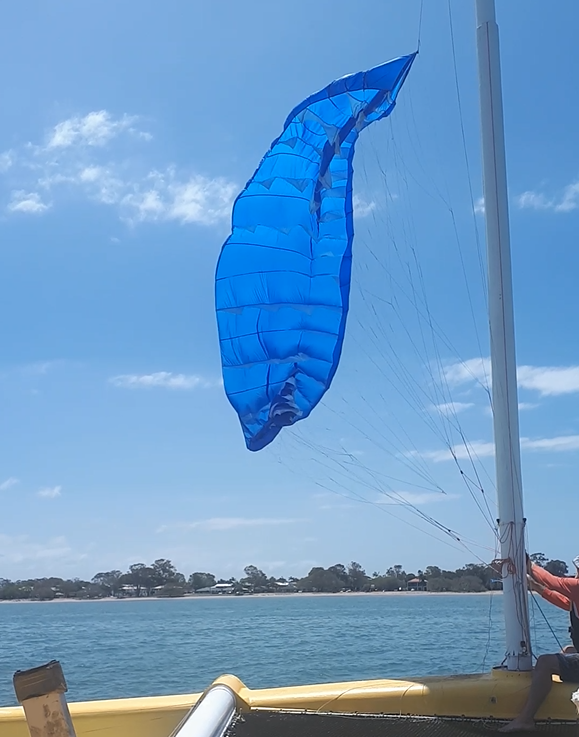
Although GM had this kite flying beautifully, I've butchered the bridles over the years, in particular to add a depower system - so it doesn't fly as well as it could. Hopefully GM will fix that. Nevertheless, as shown below, it was OK. With the halyard still attached, the kite can't fall in the water (or at least, depending on the height, not much of it can go in the water). The halyard does not, however, unfortunately, provide stable flight. If it is tensioned, the distortion causes the wing tip to collapse. Not a huge problem - but likely not a stability mechanism. On the other hand, a line from the upper steering/brake line to the mast, about a metre or so above the tow point, may well provide adequate stability (ref StabilisedLEI).
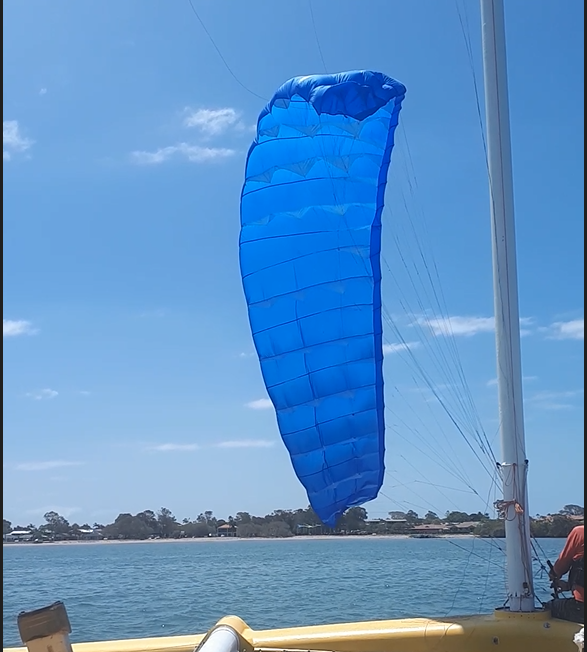
Recovery was quite straight forward in these conditions. Having pulled in the reef, the raising halyard was eased to allow the kite to drop. Simply easing the reefing halyard allowed the kite to drop to the deck - albeit with the bridle pulled to windward to stop the kite going downwind. An additional control line may be required to pull down on the upper wingtip to ensure that the reef doesn't "undo" when the kite is being dropped. This might incorporate a sock to cover the bridle. For example, a line may go from the tow point, to a block on the halyard point (where the reefing block is), then back to a sock. Tensioning that initially pulls the sock over the bridles then pulls the kite down without allowing the kite to unreef....nahh..probably wouldn't work with long bridles.... Perhaps the reefing line could incorporate a bridle sock. The reefing line would first pull the sock over the bridle then do the spanwise reefing. That's a refinement for further down the track.
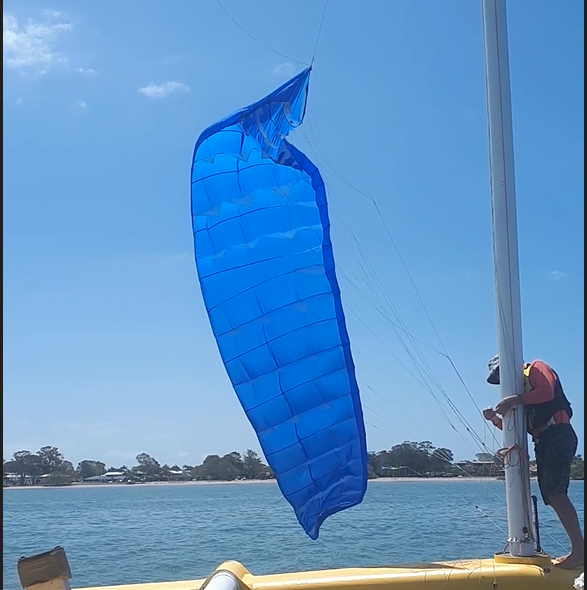
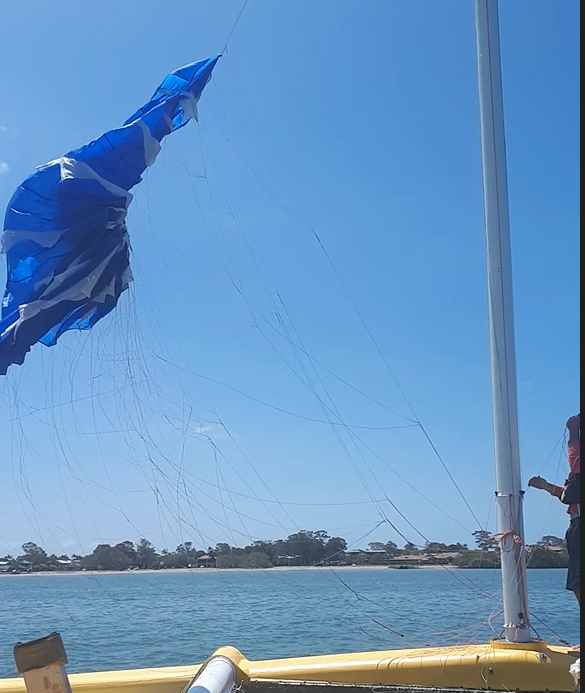
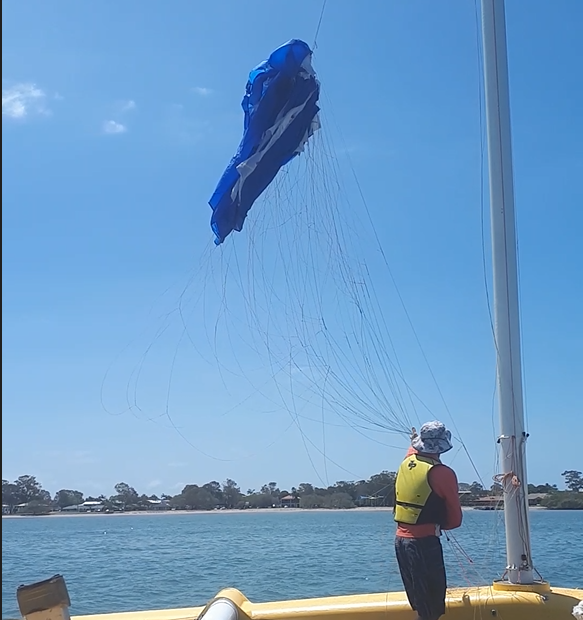
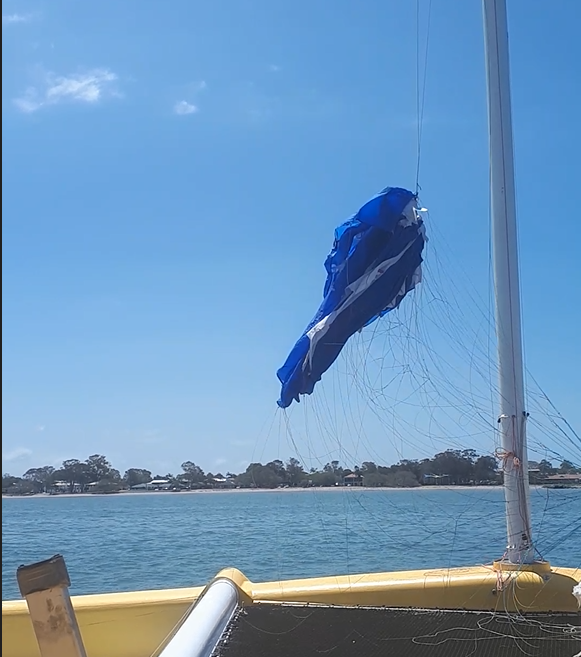
Some thoughts & questions.
- This trial was done on the mooring. So the vessel stayed head to wind. The rotational symmetry provided by the mast implies that the kite could be launched with the vessel in any orientation to the wind.
- Should the reefing line go nearer the LE? The PG I've butchered to make SS has dacron reinforcement in the LE - for about 300mm of the chord. It would be logical to run the reefing line through that (I plan to make small holes with a soldering iron).
- How many kites is possible (which is a different, though not unrelated, question from "How many kites would be wise?")? I'd like 3 for KitetiK.
- Where should the other two masts go? For good separation, and ease of installation, they'd be where the 1.5m long bow pieces join the main hull. This would provide 6m separation. But that would present access/working challenges. Separation from the centre to where the beams join the long hull (so accessible from the trampoline) is only 1.5m.
- How strong/stiff does a mast need to be? I expect the highest loads would be drag loads on the reefed kite - eg the 2nd of the reefing pictures above. I have a couple of short term options.
- Some of MB's fantastic bamboo.
- I have a couple of RB's 6m mast sections. One, of 130mm OD, weighs 13kg. A 3kg x 4.65m long windsurfer mast inserted in that would give me about 8.5m height from deck (6M + 4.65M - (1m overlap + 1m bury in hull)).
- Is SS important or should I try an unmodified PG? Open cells (as opposed to closed cell kites) should reef and unreef nearly as well as SS. As it should never go in the water, maybe full PG is OK?
- This strategy seems particularly relevant for proas. A long hull provides room for mast separation. That tow points are always to leeward is important.
- I haven't covered shunting in the above - there are at least a few options. They'll be investigated when/if further trials indicate it may be worth it.
